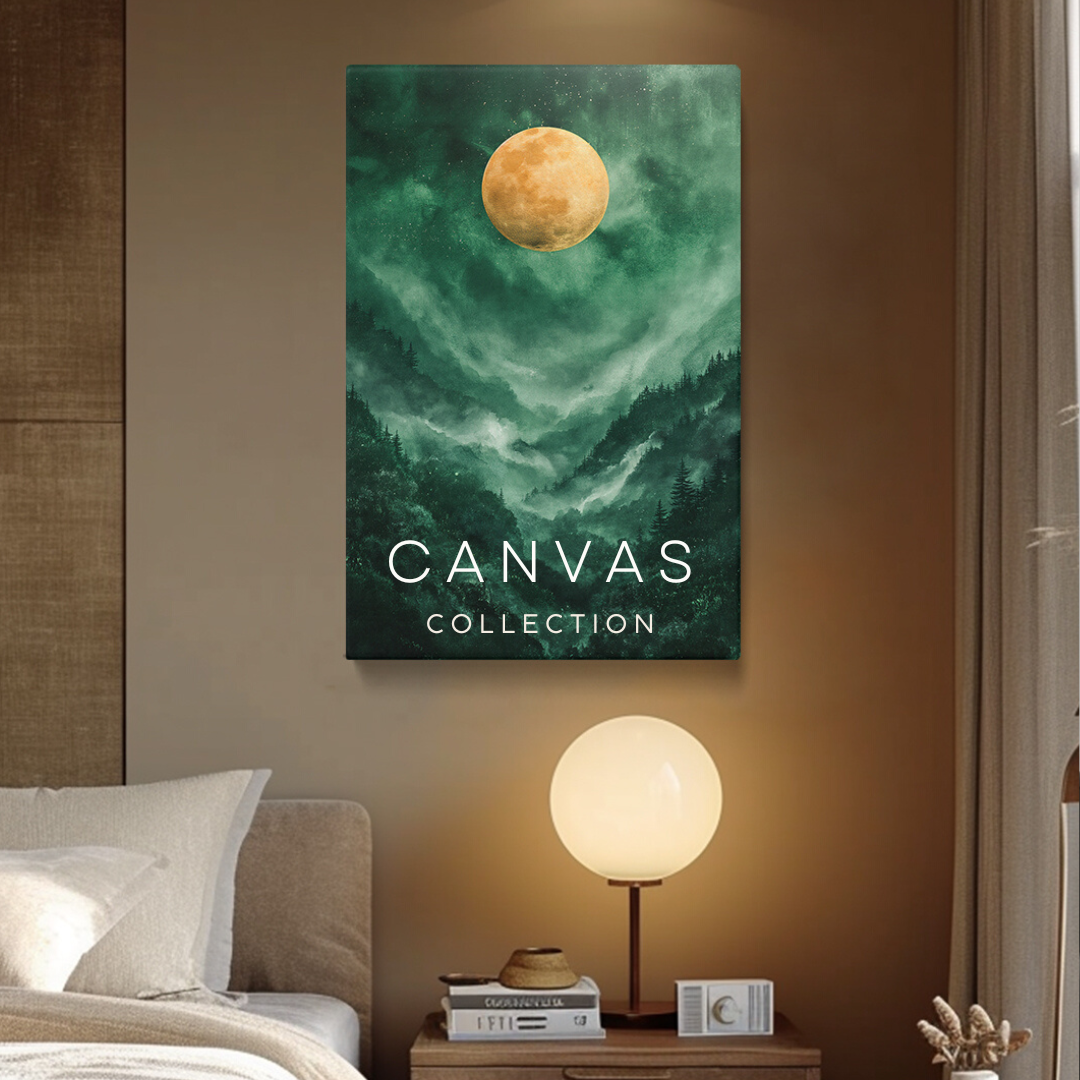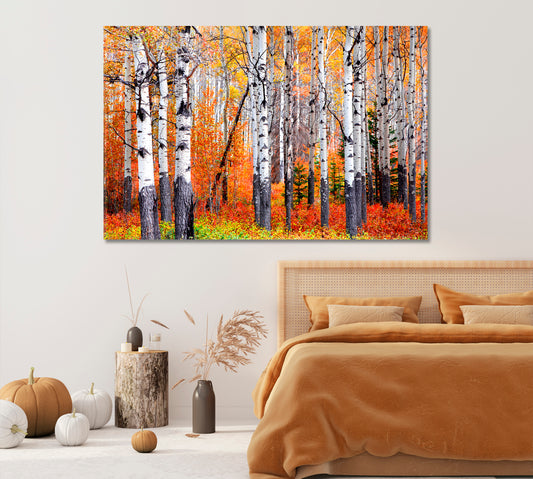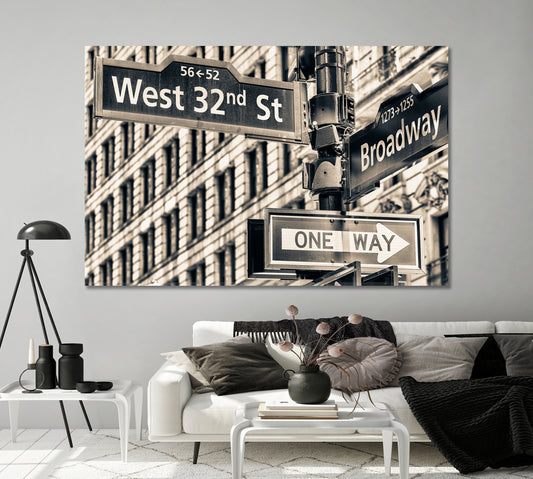
The Renaissance of the 20th Century: Pivotal Moments in Modern Art History
Share
The Renaissance of the 20th Century: Pivotal Moments in Modern Art History
I. Introduction
- Definition of the term "Renaissance" and its historical significance.
- Brief mention of how the 20th century witnessed its own form of 'renaissance' in the art world.
II. The Landscape Before the Shift
- Brief overview of early 20th-century art and its predominant styles.
- Mention of key artists and movements from the early 1900s.
III. The Rise of Abstract Expressionism
- Origins and key characteristics of the movement.
- Highlight prominent artists like Jackson Pollock and Willem de Kooning.
- Discuss the movement's impact on freeing artists from traditional restraints.
IV. Pop Art and the Influence of Mass Culture
- Introduction to Pop Art and its reflections on mass consumerism.
- Profiles of leading figures like Andy Warhol and Roy Lichtenstein.
- Exploration of how Pop Art bridged the gap between “high” art and popular culture.
V. Minimalism: Less is More
- Discuss the essence of minimalism and its contrast to the extravagance of previous eras.
- Introduce artists like Donald Judd and Frank Stella.
- Delve into how minimalism influenced not just art but also design, architecture, and music.
VI. Conceptual Art and the Idea as the Medium
- Explore how conceptual art shifted the focus from the art piece itself to the idea or concept behind it.
- Mention influential artists like Sol LeWitt and their pioneering works.
- Discuss the challenges and criticisms faced by this movement.
VII. Street Art and the Urban Canvas
- Introduction to the rise of street art and graffiti as legitimate forms of artistic expression.
- Highlight iconic figures like Jean-Michel Basquiat and Keith Haring.
- Explore the societal implications and controversies surrounding street art.
VIII. Digital Art: The Dawn of a New Era
- Discuss the rise of digital tools and their transformative impact on art creation and distribution.
- Explore the work of pioneering digital artists and the mediums they employed.
- Contemplate the democratization of art through digital platforms and its implications for the future.
IX. Conclusion
- Reflect on the rapid evolution of art during the 20th century.
- Emphasize the interconnectedness of these movements and how they laid the foundation for today's diverse art landscape.
I. Introduction

The word 'Renaissance' often evokes images of a bygone era, filled with grand frescoes, intricate sculptures, and pioneering thinkers like Leonardo da Vinci and Michelangelo. This period, marked by a fervent revival of art, culture, and intellect in Europe, laid the foundation for modern Western civilization. Yet, as we fast-forward to the 20th century, a different kind of renaissance unfolded – one not of rebirth, but of revolution. This epoch saw an explosion of artistic movements, each challenging the conventions of its predecessors, paving the way for an art world as dynamic and diverse as the society from which it emerged. In this journey, we'll dive into the tumultuous tides of the 20th century's art scene, unearthing the pivotal moments and iconic figures that have come to define modern art history. Join us as we explore the audacious experiments, groundbreaking techniques, and profound societal reflections that have reshaped the trajectory of art, crafting the vibrant tapestry we witness today.
II. The Landscape Before the Shift

Before the revolutionary shifts of the mid-to-late 20th century, the early 1900s presented a dynamic and evolving art scene that was both a continuation and a departure from 19th-century traditions. The dawn of the 20th century witnessed a surge of innovative art movements that sought to break free from academic conventions and respond to the rapid changes in society, technology, and politics.
One of the foremost styles of this era was Impressionism, although it began in the late 19th century, its influence bled into the 20th century. Artists like Claude Monet and Pierre-Auguste Renoir used loose brushwork and vibrant colors to capture fleeting moments, often emphasizing the changing qualities of light.
Following Impressionism, Post-Impressionism emerged with artists like Vincent van Gogh, Paul Gauguin, and Paul Cézanne. Each had a unique approach, from Van Gogh's emotional use of color and texture to Cézanne's analytical exploration of form.
The early 20th century also saw the rise of Fauvism, marked by artists like Henri Matisse and André Derain who used bold, non-representational color to convey emotion and structure. This was quickly succeeded by Cubism, pioneered by Pablo Picasso and Georges Braque. They deconstructed objects and figures into geometric shapes, presenting multiple viewpoints simultaneously.
Parallel to these movements, Expressionism emerged primarily in Germany with artists such as Edvard Munch and Wassily Kandinsky focusing on representing raw emotion and subjective experiences, often with distorted and exaggerated forms.
Moreover, the dawn of the Surrealist movement in the 1920s with figures like Salvador Dali and René Magritte showcased dreamlike scenes and unexpected juxtapositions, drawing heavily from Freudian psychology.
Lastly, the Futurism movement, mainly centered in Italy, celebrated the speed, technology, and urban modernity of the time, with artists like Umberto Boccioni emphasizing dynamism and the energy of contemporary life.
In essence, the early 20th century was a melting pot of artistic experimentation, with each movement building on or rebelling against its predecessor. This fertile ground of innovation set the stage for the even more radical transformations in art that the later decades of the century would bring.
III. The Rise of Abstract Expressionism
Abstract Expressionism emerged in the 1940s, primarily in New York City, marking the shift of the art world's epicenter from Paris to New York. Rooted in the earlier work of artists who dabbled in abstract art during the 1930s and the chaotic backdrop of World War II, Abstract Expressionism represented a distinctly American response to the challenges and anxieties of the time.
The movement is characterized by two primary methods. One is the "Action Painting" approach, where the process of painting becomes an act of spontaneous, emotional expression. The canvas becomes an arena where artists work rapidly, allowing the paint to drip, splash, and smear. The second method is more focused on fields of color and atmospheric effects.
Jackson Pollock is perhaps the most iconic figure associated with Abstract Expressionism, particularly the "Action Painting" approach. His "drip paintings" where he dripped or poured paint onto the canvas from above, allowed for a degree of chance and highlighted the physical act of painting. Willem de Kooning, another titan of the movement, combined abstraction with hints of the figure. His works, particularly his 'Woman' series, are characterized by aggressive brushwork, fragmented forms, and bold colors.
The rise of Abstract Expressionism had a profound impact on the art world. It moved away from traditional European styles and aesthetics, establishing a uniquely American voice in modern art. More than just a style or technique, it was about the artist's expression and the emotive capacity of the artwork itself.
By emphasizing spontaneous, personal emotional expression over representational accuracy, Abstract Expressionism freed artists from the constraints and conventions of traditional art. It validated the idea that the process of creation was as significant, if not more so, than the finished product. This concept paved the way for numerous other art movements in the latter half of the 20th century and emphasized the subjective experience of both the artist and the viewer in understanding and interpreting art.
IV. Pop Art and the Influence of Mass Culture

Pop Art, emerging prominently in the late 1950s and 1960s, stood in stark contrast to the introspective nature of Abstract Expressionism. Rooted in Britain but reaching its zenith in the United States, Pop Art was a response to the post-WWII explosion of mass media, advertising, and consumerism. It sought to challenge the boundaries of art by incorporating elements from everyday life and popular culture.
Pop Art was characterized by its bold, colorful, and often ironic portrayals of cultural icons and everyday objects. By using imagery from advertisements, comic strips, and products, it commented on the proliferation of mass culture and its pervasive influence on society.
Andy Warhol, undoubtedly the most iconic figure of the movement, was fascinated by celebrity culture and consumer goods. His famous series of Campbell's Soup Cans and portraits of celebrities like Marilyn Monroe highlighted the repetitive, mass-produced nature of consumer goods and celebrity culture. Warhol's use of the silkscreen process further emphasized the idea of mass production, as he could churn out multiple copies of the same image, much like products on an assembly line.
Roy Lichtenstein, on the other hand, drew inspiration from comic strips. His works, characterized by their use of Ben-Day dots (a printing process), often played with clichés from popular media. By recontextualizing these images on a grand scale, Lichtenstein forced viewers to see them in a new light, challenging their perceptions of what constitutes art.
The genius of Pop Art lay in its ability to bridge the gap between "high" art and popular culture. While some critics dismissed it as simplistic or commercial, Pop Art forced a re-evaluation of the role of art in a rapidly changing society. It posed the question: In an age of mass production and pervasive media, what distinguishes a mundane advertising image from a work of art? By blurring these lines, Pop Art not only commented on the world around it but also expanded the boundaries of what art could be, forever altering the landscape of the art world.
V. Minimalism: Less is More
Emerging in the late 1950s and reaching prominence in the 1960s and 1970s, Minimalism was a direct counter-response to the expressive nature of Abstract Expressionism and the loud, colorful imagery of Pop Art. It was built on the philosophy that art should not refer to anything other than itself; it should be stripped down to its essence, devoid of metaphorical associations, personal expression, or complex narratives.
The essence of Minimalism lies in its simplicity. It's characterized by geometric shapes, repetition, neutral or monochromatic color palettes, and an emphasis on the physicality of the art object itself. In contrast to the indulgence and extravagance of previous art movements, Minimalism's stripped-down aesthetic embodied the idea that 'less is more'.
Donald Judd, a pioneer of the movement, rejected the idea of classical sculptures situated on pedestals. Instead, he placed simple, repeated geometric forms directly on the ground or against walls, emphasizing their relationship to the surrounding space. His "stacks" — vertical arrangements of identical rectangular boxes — championed the Minimalist ethos by focusing on form and structure rather than symbolism.
Frank Stella, another significant figure, became known for his monochromatic and concentric-shaped canvases, where the shape of the canvas itself matched the shapes painted onto it. Stella once famously said, "What you see is what you see," highlighting the idea that art can be purely about visual experience without deeper symbolic meaning.
Beyond the world of visual art, Minimalism had a profound influence on various domains. In architecture, it birthed spaces that were clean, unadorned, and functional, often using basic geometric shapes and eschewing unnecessary decoration. Design, too, saw a shift towards products and interfaces that were streamlined and intuitive. Even in music, Minimalist composers like Steve Reich and Philip Glass focused on simple, repetitive structures to create soundscapes that differed starkly from the complex compositions of the Romantic or Classical eras.
In essence, Minimalism was not just an art movement; it was a cultural shift. It challenged the excesses of modern society and offered an alternative that focused on purity, clarity, and intention. By emphasizing restraint, it encouraged a deeper engagement with the material and spatial aspects of art and design, prompting audiences to see and experience the world in a more focused and deliberate way.
VI. Conceptual Art and the Idea as the Medium

Emerging predominantly in the 1960s and 1970s, Conceptual Art marked a radical departure from traditional art forms, where the end product—a painting, a sculpture, or an installation—was the primary focus. Instead, in Conceptual Art, the emphasis was placed on the idea or concept behind the work, often relegating the physical manifestation of the artwork to a secondary or even irrelevant position. It proposed the revolutionary thought that art need not be a tangible object but can exist solely as an idea.
Sol LeWitt, one of the movement's pioneers, famously declared, "In conceptual art, the idea or concept is the most important aspect of the work." This notion was evident in his "Wall Drawings," where LeWitt would provide a set of instructions for a drawing, and others could execute it. The drawings themselves could vary based on the interpretation of the instructions, reinforcing that the concept, not the execution, was paramount.
Conceptual artists often utilized language, performance, and a range of unconventional materials and methods to convey their ideas. They challenged the traditional boundaries and definitions of art, posing questions about authorship, permanence, and the role of institutions like galleries and museums.
However, the abstract nature of Conceptual Art and its departure from the tangible and visual led to a fair amount of criticism. Many found it inaccessible, overly intellectual, or even dismissive of artistic skill. The fact that some works existed only as descriptions or documented performances led to debates about what constitutes art and who gets to decide its value.
Despite its challenges, Conceptual Art played a crucial role in expanding the horizons of what art could be. It encouraged a deeper engagement with the intellectual and philosophical aspects of art, emphasizing the importance of the artist's intent and the viewer's interpretation. In doing so, it paved the way for future movements and contemporary practices that continue to challenge and redefine the art world's boundaries.
VII. Street Art and the Urban Canvas

As the art world shifted and evolved through the latter half of the 20th century, one movement took art out of the hallowed halls of museums and onto the streets, literally. Street art, often arising from graffiti, started as an underground, rebellious act but soon grew into one of the most influential art forms, redefining public spaces and urban landscapes.
The origins of street art can be traced back to the graffiti culture of the 1960s and 1970s, primarily in cities like New York. Initially seen as acts of vandalism or resistance, these early graffiti pieces were markers of identity, with artists "tagging" walls, subway cars, and buildings to make their presence known.
However, as the movement evolved, so did the complexity and ambition of these public artworks. No longer just about tagging and marking territory, artists began to use the city as their canvas, telling stories, raising awareness about social issues, and transforming drab urban environments into vibrant artworks.
Two artists who rose from this movement and achieved international acclaim were Jean-Michel Basquiat and Keith Haring. Basquiat began as a graffiti artist under the pseudonym SAMO, scrawling poetic and subversive epigrams across Lower Manhattan. His unique style, which combined text and imagery, soon transitioned to canvas, earning him a place in art galleries and private collections. Haring, on the other hand, became renowned for his public art, particularly chalk drawings on empty advertising panels in subway stations. His radiant, cartoon-like figures, often imbued with political and societal messages, became symbols of New York in the 1980s.
Street art's rise was not without controversy. Many city officials and residents viewed it as vandalism, leading to legal battles, arrests, and efforts to erase these works. Furthermore, as street art grew in popularity and started being co-opted by brands and commercial interests, debates arose about its authenticity, commodification, and the gentrification of neighborhoods known for their vibrant street art scenes.
Regardless of these challenges, street art has firmly established itself as a legitimate and powerful form of artistic expression. It democratizes art, taking it out of exclusive spaces and into the public realm, accessible to all. More than just aesthetic additions to urban landscapes, these artworks often serve as reflections of societal changes, struggles, hopes, and the ever-evolving identity of a city and its inhabitants.
VIII. Digital Art: The Dawn of a New Era
Digital Art: The Dawn of a New Era

As we ventured into the closing decades of the 20th century, the digital revolution began to leave its indelible mark on various aspects of human life. Art, a reflection and product of its times, was no exception. With the advent of computers and later the internet, the realm of art expanded, leading to the birth of a whole new genre: digital art.
The initial foray into digital art was through simple tools that allowed artists to create designs and patterns. However, as technology evolved, so did the complexity and capabilities of these tools. Software like Adobe Photoshop, Illustrator, and CorelDRAW provided artists with a digital canvas where the only limit was their imagination. The ability to manipulate images, blend realities, and create entirely new worlds became possible.
Pioneering digital artists such as Laurence Gartel, Manfred Mohr, and Vera Molnár began exploring the capabilities of digital tools in their art. They employed algorithms, fractals, and computer-generated imagery to craft pieces that were distinct from anything seen before. Their work not only showcased the potential of the medium but also raised questions about authorship, originality, and the nature of creativity in a digital age.
But perhaps one of the most transformative aspects of the digital art era has been its democratization. Prior to this, art was often confined to galleries, museums, or private collections, accessible to a select few. With the internet, art became universally available. Platforms like DeviantArt, Behance, and later, Instagram, allowed artists from all corners of the world to showcase their work, gain audiences, and even monetize their craft. The barriers to entry were significantly lowered, leading to an explosion of creativity and a diversity of voices.
This democratization, however, was a double-edged sword. While it enabled a plethora of artists to gain recognition, it also led to issues around copyright, authenticity, and the devaluation of art in an oversaturated market. The concept of NFTs (non-fungible tokens) in the 21st century has attempted to address some of these challenges by providing digital art with provenance and uniqueness.
Looking forward, it's evident that digital art is not just a passing phase but a fundamental shift in how we create, consume, and think about art. Its implications will continue to resonate, challenging traditional notions and paving the way for uncharted artistic territories. As technology continues to evolve, from virtual reality to artificial intelligence, the canvas of digital art is set to expand, taking both artists and audiences on unprecedented journeys.
IX. Conclusion

The 20th century, in many respects, can be seen as a grand tapestry of artistic experimentation and evolution. A period of rapid change, both socially and technologically, it witnessed seismic shifts in the way art was conceived, created, and consumed. The century began with the echoes of traditionalism, only to shatter conventions and continually redefine what art could be and represent.
Each movement, from Abstract Expressionism to Digital Art, was not an isolated phenomenon but rather a reaction to the zeitgeist of its time and the movements that preceded it. The raw emotional expressions of abstract artists were as much a response to the tumultuous world wars as they were a departure from the academic art of the earlier centuries. Pop Art, in its vibrant and satirical critique, captured the essence of a booming post-war consumerist society while providing commentary on the ever-thinning line between high and low culture. Each movement, in its unique way, paved the path for the next, creating a dynamic interplay of styles, ideas, and philosophies.
This interconnectedness is vital to understanding the rich mosaic of 20th-century art. The Minimalist's 'less is more' philosophy, for instance, can be seen as a counterpoint to the exuberance of Pop Art. Similarly, the Conceptualists, emphasizing the idea over the artwork itself, further pushed the boundaries set by their predecessors, leading the art world to question the very nature of art. Street art, breaking away from the conventional gallery space, democratized art, making it accessible and resonant to the masses, a sentiment later amplified by the digital age.
As we stand at the threshold of a new century, the legacy of the 20th century's art movements is palpable. They have not only enriched our artistic heritage but have also laid a robust foundation for the boundless possibilities of the future. The diversity, inclusivity, and fluidity we witness in today's art landscape owe much to the relentless innovators of the past century, who dared to challenge, dream, and inspire. It's a testament to the transformative power of art and its enduring ability to reflect and shape the human experience.









